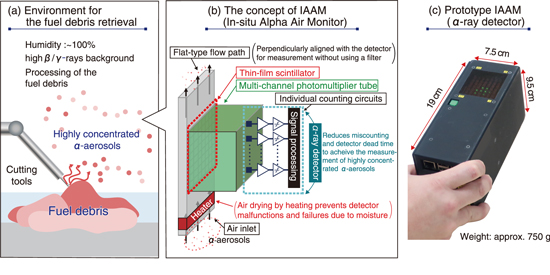
Fig.1-15 α-Aerosol monitoring inside 1F primary containment vessels (PCVs) by the in-situ Alpha Air Monitor (IAAM)
The decommissioning of the Fukushima Daiichi Nuclear Power Station (1F) will involve large-scale retrieval of nuclear fuel debris (NFD) from the damaged reactor in the future. During the processing of the NFD, the fine particles originating from NFD will be scattered into the primary containment vessel (PCV). In particular, particles containing alpha nuclides (α-aerosols) can result in a drastically high effective dose upon inhalation. Therefore, it is important to monitor their concentration on a real-time basis inside the 1F-PCVs. However, in the humid and high-dose environment in the 1F-PCVs, a conventional α-dust monitor, which collects aerosols on a filter and continuously measures α-rays using a semiconductor detector, is almost impossible to apply because of problems such as the malfunctioning of the detector due to moisture, clogging of the filter, upper limit of the measurement range, and β/γ-ray sensitivity.
To achieve α-aerosol monitoring inside 1F-PCVs, we defined four requirements: (1) reliable operation under high humidity, (2) α-aerosol monitoring without using a filter, (3) high concentration α-aerosol measurement, and (4) selective measurement of α-aerosols in a high β/γ-ray environment. The In situ Alpha Air Monitor (IAAM) was designed to satisfy these requirements (Fig.1-15). The key designs of the system are as follows.
(1) Air drying in the flow path prevents detector malfunctions due to moisture in the air.
(2) The α-aerosol measurement can be performed without using a filter by placing the α-ray detector perpendicular to a “flat-type flow path” whose width is sufficiently smaller than the range of the α-rays.
(3) By combining a thin-film scintillator with a multichannel photomultiplier tube, the scintillation due to radiation incidence is separated into 64 groups for counting, thereby reducing the occurrence of signal miscounting and detector dead states. By adopting this method, α-aerosol concentrations of up to 3.2 × 102 Bq/cm3 (>30 times that in a 1F-PCVs) can be measured.
(4) The thickness of the thin-film scintillator and the threshold for signal processing are optimized for the selective measurement of α-rays. Therefore, even in high γ-ray environments of 100 mSv/h, only α-aerosols can be selectively measured.
The developed IAAM can monitor α-aerosol concentrations in-situ under the conditions expected in the 1F-PCVs, and thus, it has the capability to promptly detect abnormal fluctuations in concentrations, etc. and is expected to remarkably improve safety. In the future, we aim to operate the system in the 1F environment. The ability to measure highly concentrated α-aerosols is expected to contribute to improving worker safety during the decommissioning of nuclear fuel facilities other than 1F.
This research was conducted in collaboration with the Research Institute for Radiation Medicine, Hirosaki University.
(Youichi Tsubota)